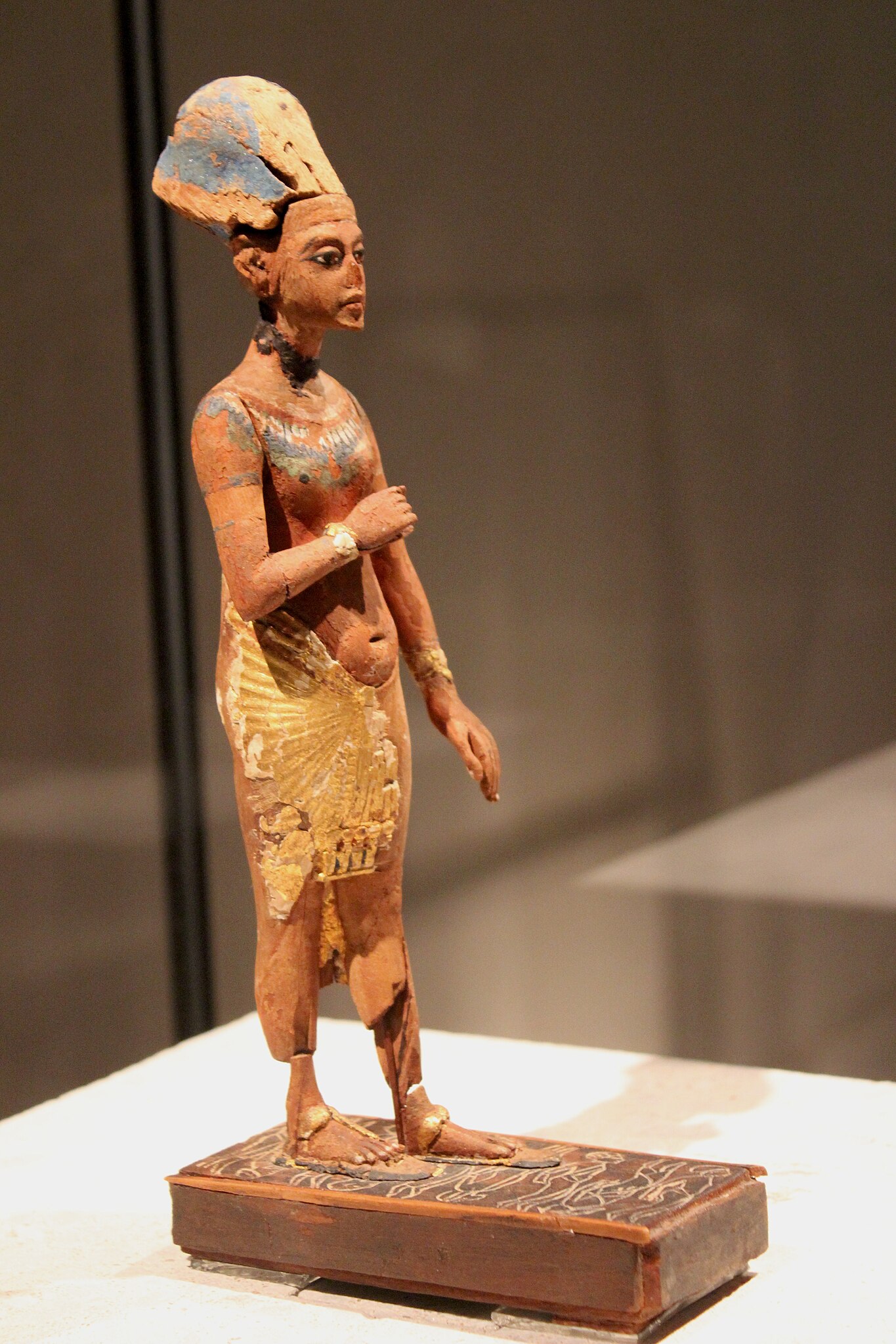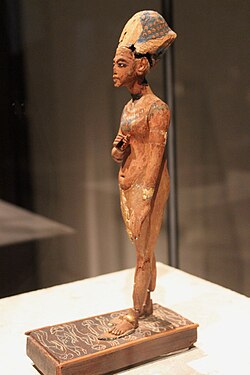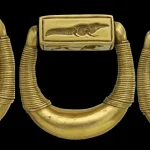Gilded and Painted Wooden Statue of a Striding Pharaoh

Gilded and Painted Wooden Statue of a Striding Pharaoh
Depicting either Akhenaten (ca. 1353–1336 BCE) or his son Tutankhamun (ca. 1336–1327 BCE) — both rulers of the New Kingdom, 18th Dynasty . The pharaoh wears the blue war crown (Khepresh) , symbolizing royal power and divine authority.

Throughout the long history of Egypt, few figures have provoked as much debate as Akhenaten. His reign was marked by social, political, and religious upheaval of a scale rarely seen in any civilization. In less than two decades on the throne, Akhenaten introduced major changes to Egyptian religion, transformed the royal artistic style, relocated the capital to a previously uninhabited site, pioneered a new architectural approach, and sought to erase the names and images of certain traditional Egyptian deities. It is partly due to the dramatic and contentious nature of his rule that this era—known as the Amarna period—has attracted such sustained attention from both scholars and the public.

Since Akhenaten’s rediscovery by modern Egyptology, countless studies and biographies have explored his controversial reign, often emphasizing his radical and disruptive character. James Henry Breasted captured this view succinctly: “Until Ikhnaton the history of the world had been the irresistible drift of tradition. All men had been but drops of water in the great current. Ikhnaton was the first individual in history.”

Akhenaten ascended to the Egyptian throne in either 1353 or 1351 BCE, reigning for approximately 17 years during the 18th Dynasty of the New Kingdom. He is best known today for establishing a religion centered on the Aten, a deity typically represented as a sun disk and understood as the light emitted by the sun itself. Originally crowned under his birth name, Amenhotep IV, he changed it in his fifth regnal year to Akhenaten—meaning “Effective for Aten”—to reflect his religious convictions. Soon after, he launched sweeping reforms in Egyptian religion, art, and writing, many of which coincided with the jubilees of his deified father, Amenhotep III, and the Aten.











